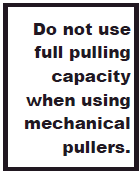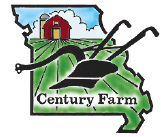

To send a message to an author, click on the author's name at the end of the article.
This Month in Ag Connection | Ag Connection - Other Issues Online
Gardeners are anxious to get back into their gardens by March. Daffodils typically make their appearance by late March and shrubs like forsythias start blooming. One of the first things to do in the lawn and garden is a winter cleanup. Raking removes the dead growth, leaves, twigs and winter debris and allows light and air to reach the soil, encouraging the grass to grow. Remove any dead plants from the garden which were not removed last fall. If young trees were wrapped in the fall for protection from Southwest Injury, now is the time to remove the wrap. Leaving the wrap on can damage the trunk by allowing insects and rain to get inside. Remove weeds as they start to grow while their roots are still shallow and easy to pull. Chickweed and henbit are two of the earliest weeds seen in the spring.
Pruning fruit trees and small fruits such as your grapevines and bramble fruits needs to be done by late March. Grapevine clippings can be saved to start new plants. Apply dormant oil spray to fruit trees, magnolias, crabapples and shrubs, such as euonymus, to control scale insects and other overwintering pests. Apply dormant oil when the buds are swelling but the leaves have not opened yet. Apply when temperatures are between 40 and 70 degrees F.
Wait for temperatures to be reliably warm before removing winter mulch or cutting back perennials such as roses. During the Easter freeze of 2007, temperatures had been mild and then nighttime temperatures fell into the teens, causing a lot of damage to fruit crops. Before uncovering strawberries or even roses, make sure temperatures will not drop below freezing.
Plants which have heaved out of the ground due to freezing and thawing should be replanted when the ground thaws and the temperatures stay above freezing. Resist the urge to start digging in flower beds too early as the soil's structure can be damaged when moisture content is too high. A handful of soil should fall apart and not stick together like glue. When it is dry enough, start to work the beds and add compost or manure in preparation for planting.
Actual planting dates can depend on current weather condition and your location within the state hardiness zones. Recommended vegetables, varieties with both spring and fall planting dates for Missourians are listed by hardiness zone in MU guide 6201 - Vegetable Planting Calendar - http://extension.missouri.edu/p/G6201
Mower blades should be sharpened and mowers or tillers should have a tune-up before using. Prepare other tools for the season by tightening any loose screws, removing rust, and applying oil to the wooden handles for protection. Proper maintenance of tools will increase longevity.
Source: Jennifer Schutter, Horticulture Specialist
This Month in Ag Connection | Ag Connection - Other Issues Online
Dr. Scott Poock with University of Missouri College of Veterinary Medicine started the evening by saying it is essential to first understand the three stages of normal delivery so one can then recognize an abnormal delivery. Knowing when and if assistance is needed and when to call a veterinarian can help reduce post calving problems in the cow and save calves.
During the first stage of labor the cervix dilates, the calf rotates to an upright position, uterine contractions begin, and the water sac is visible. During this process the cow is nervous, kicks at her side, and lies down with mild contractions. This is often observed in heifers and can last 4-6 hours, however it might go unnoticed in cows and can last 2-3 hours for mature cows.
During the second stage of labor the calf enters the birth canal. The cow has strong frequent contractions, lays down, the water sac and or calf is visible and the cow discharges fluids. The feet and head protrude first and the calf delivery is complete. In heifers, this can take 3-6 hours and in cows it can last 2-4 hours. If the time from feet/water sac being visible to birth is longer than one hour and no progress is made in 30 minutes, then the calf should be checked for abnormal position. Assistance in delivery may not be necessary at this time.
During the third stage of labor the button (caruncle) attachments relax and the uterine contractions expel membranes. The cow has mild contractions, membranes hanging out and a discharge of fluids. In both heifers and cows, this stage can last 2-8 hours. It would be considered abnormal to last greater than 12 hours.
Equipment needed to assist the cow and calf are: OB sleeves, OB chains or straps, OB handles, clean buckets, liquid soap, lubricant, hot water and disinfectant. The cow will need to be restrained and the tail held out of the way. Scrub the external area, use OB sleeves and lubricate hand and arms generously. During the examination: 1) determine if the cervix has dilated, 2) if the water sac has broken, 3) if the calf is in proper position and 4) if the calf can pass through the pelvis. Calf orientation can be determined by differentiating between front and rear limbs. The front limbs have two flexible joints below the elbow while the rear limbs have only one below the hock.
A veterinarian should be called if: 1) the problem is unidentifiable, 2) the problem is identifiable but cannot be managed without assistance or 3) the problem is identifiable but correction is not accomplished by the producer within 30 minutes.
If planning to pull the calf:

When using OB chains, make a double loop around the calf's leg, one loop above the dew claw and one below. While pushing is generally the last thing one thinks about during calving, pushing the calf's body back into the uterus allows more room to reposition a leg or head for easier delivery. Upon delivery, always check for a second calf. A veterinarian may need to be consulted if excessive bleeding or partial paralysis occurs.
In conclusion, watch closely for the onset of labor, look for continual progress, do not interfere too soon, do not over-use force, use lubrication and if unsure call your veterinarian. For more information on assisted calving, calf care after birth or cow related reproductive inquiries call a regional livestock specialist or veterinarian.
Source: Gentrie Shafer, Livestock Specialist
This Month in Ag Connection | Ag Connection - Other Issues Online
The North Central Region, which includes Missouri, recently published a new lease form entitled Farm Machinery Lease for Non-commercial Transactions. The terms rental and lease are often used interchangeably, but when referring to farm equipment there is a difference in the control period. Leases typically permit the farmer to control the equipment for one or more years, while rental agreements typically last for less than one year.
A typical rental agreement includes a specified rate for every hour registered on the hour meter of the machine. Frequently, payment for a minimum number of hours is also required. The beginning and ending dates of the rental period restrict the total use of the machine. Rental agreements are especially useful for machines used only for a short period of time such as skid loaders, grain drills, combines and large tractors.

For long-term control of equipment, leasing is a choice. Leasing plans offer a large degree of flexibility for payment terms. Farm machinery dealers, manufacturers, finance companies all offer lease opportunities. Both company financing and leasing terms change over time, so it is imperative to evaluate each decision carefully.
There are two general types of leases: 1) true or operating leases and 2) finance or capital lease. They are treated differently for income tax purposes.
A true (or operating) lease includes a series of regular payments, usually annual or semiannual, for a period of years. At the end of the lease period the operator can purchase the machine at a price close to fair market value or extend the lease. If the farmer no longer needs or wants the machine, it can be returned to the leasing entity. Lease payments are reported as ordinary expenses on the tax return, and are fully deductible. If the purchase option is exercised, the machine is then placed on the farm's depreciation schedule, with a beginning tax basis equal to the purchase price.
A finance (or capital) lease has a similar payment schedule to a true lease, but is treated as a conditional sales contract by the Internal Revenue Service (IRS). The farmer is considered to be the owner of the machine, so it is put on the farm depreciation schedule. Payments made to the lease company must be divided into interest and principal, with only the interest portion being tax deductible. Many finance leases are similar to balloon payment loans set up for three to five years. The difference is at the end of the lease period, the operator can choose to either return the machine to the dealer or make the final balloon purchase payment. Since the finance lease is not being taxed as a true lease, the final buy-out price can be quite variable, depending on the length of the lease and the size of the payments.
A few of the items that should in a farm lease include: 1) the customer and dealer names and information 2) the exact piece of equipment being leased, 3) the beginning and ending dates of the lease, 4) the base hours defined as the annual number of hours the equipment is expected to be used, 5) the payment due the lessor (owner of equipment) for use in excess of the base hours.
For a complete list of items that should be included in farm equipment leases contact a University of Missouri Extension ag business specialist.
Sample equipment lease forms are available on http://aglease101.org or through extension ag business specialists.
Source: Mary Sobba, Ag Business Specialist
This Month in Ag Connection | Ag Connection - Other Issues Online

The Missouri Century Farm program's history dates back to 1976 as a result of the Missouri Committee for Agriculture which was co-chaired by James B. Boillot, Director, Missouri Department of Agriculture; and Elmer R. Kiehl, Dean of the College of Agriculture, University of Missouri. The committee's purpose was to organize the American Revolution Bicentennial celebration in Missouri. One activity initiated by the committee was the "Centennial Farm" project, which awarded certificates to persons owning farms which have been in the same family for 100 years or more. Interest in the program continued after 1976. The College of Agriculture, Food and Natural Resources and University of Missouri Extension planned a 10-year update in 1986 called the "Century Farm" program. This program has been sustained as a yearly event with over 100 farms recognized each year. In 2008, the Missouri Farm Bureau became a program co-sponsor.
Century farms and ranches have shaped the nation. Amidst every kitchen, behind every faded barn door, and in every soiled and calloused hand lie untold stories of those who feed our nation. As an industry, we are called to discover these stories and share with consumers everywhere the contribution farmers and ranchers have made to our American heritage. It is time to redefine sustainability and put a face to the farmer who fills our cupboards and clothes our backs.
A Century Farm application can be downloaded at http://extension.missouri.edu/centuryfarm/
Publishing Information
Ag Connection is published monthly for Northeast and Central areas of Missouri producers and is supported by the University of Missouri Extension, the Missouri Agricultural Experiment Station, and the MU College of Agriculture, Food and Natural Resources. Managing Editor: Mary Sobba.